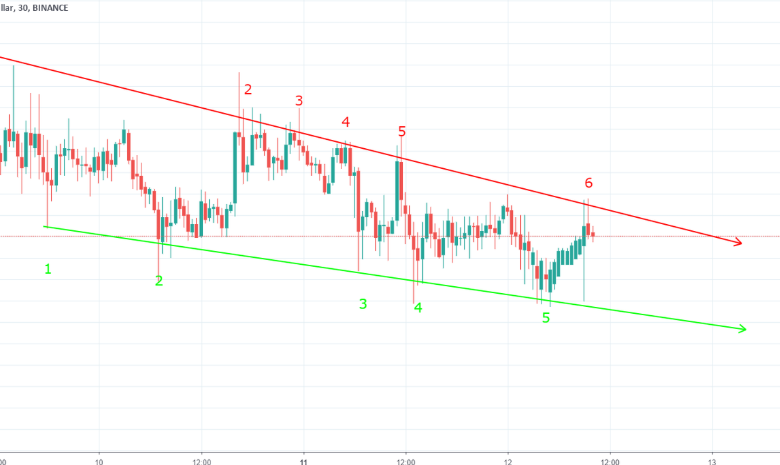XRP Price USD vs. Traditional Assets: A Comparison for Investors

In recent years, the cryptocurrency market has witnessed a surge in investor interest, particularly in alternative digital assets like XRP. As one of the most prominent digital currencies, XRP’s price dynamics often raise questions about its performance when compared to traditional financial assets. In this article, we will explore how the XRP price USDT compares to traditional assets like stocks, gold, and real estate. Understanding this comparison can provide investors with insights into the potential risks and rewards of adding XRP to their investment portfolio.
Understanding XRP: What is it?
XRP, developed by Ripple Labs, is a digital currency designed to facilitate fast, low-cost cross-border transactions. Unlike Bitcoin or Ethereum, which rely on proof-of-work mechanisms, XRP operates on a consensus algorithm known as the RippleNet protocol. This technology allows for faster transaction speeds and minimal fees, making it a preferred choice for financial institutions and banks.
Key Features of XRP
- Fast Transactions: XRP transactions typically settle within 3-5 seconds.
- Low Fees: XRP is known for its extremely low transaction costs.
- Scalability: XRP can handle a high volume of transactions per second (over 1,500 transactions).
- Decentralization vs. Centralization: While XRP is often considered a decentralized cryptocurrency, Ripple Labs, its parent company, holds a significant influence over its network.
XRP Price USD vs. Traditional Assets
The value of XRP, like any cryptocurrency, is subject to high volatility. To better understand its potential as an investment, it’s important to compare its price movement with traditional assets like stocks, bonds, and precious metals.
1. XRP Price vs. Stock Market
The XRP price USD has seen substantial fluctuations over the years, often in stark contrast to the relatively stable growth of traditional stocks. Stocks represent ownership in a company, and their value is influenced by factors such as revenue growth, market sentiment, and macroeconomic trends.
Volatility
- XRP Price USD: Historically, XRP has shown extreme volatility, with rapid price surges followed by sharp declines. For instance, during the bull run of 2017, XRP saw its price soar to an all-time high of over $3.00, only to fall drastically in subsequent years.
- Stocks: In comparison, stock prices generally exhibit lower volatility, especially those of blue-chip companies. Though stocks can experience market corrections, they are often viewed as less risky than cryptocurrencies like XRP.
Market Hours
- XRP Price USD: Cryptocurrencies like XRP are traded 24/7, providing investors with constant price updates and trading opportunities.
- Stocks: In contrast, the stock market operates only during specific hours, typically 9:30 AM to 4:00 PM EST, Monday through Friday, with weekends and holidays off.
Long-Term Growth
- XRP Price USD: The future of XRP is uncertain, particularly due to ongoing regulatory concerns and competition from other digital currencies.
- Stocks: Historically, the stock market has shown long-term growth, with indices like the S&P 500 returning an average of 7-10% annually over long periods.
2. XRP Price vs. Gold
Gold has long been a safe-haven asset, prized for its stability and ability to hedge against inflation. It’s often seen as a store of value in times of economic uncertainty.
Price Stability
- XRP Price USD: Compared to gold, XRP exhibits much higher volatility. While gold typically holds its value over time, the price of XRP can be influenced by speculative trading, news events, and changes in market sentiment.
- Gold: Gold has a relatively stable price, with incremental increases over time. It is less prone to sudden swings and provides a hedge against economic downturns.
Correlations
- XRP Price USD: XRP’s correlation with traditional markets is still evolving. During periods of market turbulence, XRP’s price can behave unpredictably, sometimes aligning with risk-on assets or showing detachment from broader market movements.
- Gold: Gold has a well-established inverse relationship with traditional financial markets. When the stock market falls, gold prices often rise as investors seek a safer store of value.
Investment Approach
- XRP Price USD: Investors looking at XRP as a long-term store of value may be disappointed due to its volatility. XRP is often considered more of a speculative investment rather than a stable asset.
- Gold: For those seeking wealth preservation, gold remains a top choice, providing a buffer against inflation and a safeguard in times of crisis.
3. XRP Price vs. Real Estate
Real estate is another traditional asset that many investors consider for long-term growth and stability. The real estate market generally provides steady returns and is a popular choice for diversification.
Price Movements
- XRP Price USD: The price of XRP can fluctuate wildly due to news and regulatory changes. XRP investors must contend with these sharp swings, which may be more appealing to risk-tolerant investors looking for high potential rewards.
- Real Estate: In contrast, real estate tends to have slow and steady price increases over time. Market fluctuations occur, but they are typically less dramatic than those seen in the crypto market.
Liquidity
- XRP Price USD: XRP is highly liquid, meaning it can be quickly bought or sold on cryptocurrency exchanges around the world.
- Real Estate: Real estate, on the other hand, is illiquid. Selling a property can take months and involves significant transaction costs, making it less suitable for quick buying and selling.
Income Generation
- XRP Price USD: XRP does not generate income on its own. Investors rely purely on price appreciation for returns.
- Real Estate: Real estate can provide both capital appreciation and rental income, making it an attractive option for income-seeking investors.
4. Risk Considerations
While comparing XRP price USD with traditional assets, it’s important to understand the associated risks:
- XRP Price USD: Regulatory uncertainty is one of the biggest risks for XRP. The ongoing legal battle with the U.S. Securities and Exchange Commission (SEC) has created considerable uncertainty, and future regulation could significantly impact its price.
- Traditional Assets: Stocks, bonds, and real estate, while not free from risk, are more regulated, and their prices are influenced by well-established factors like earnings reports, interest rates, and economic data.
Why Investors Should Consider XRP
Despite its volatility, there are reasons why investors might consider adding XRP to their portfolio:
1. Diversification
XRP offers a way to diversify an investment portfolio. As a digital asset, it has a different risk profile compared to traditional assets like stocks and bonds.
2. Growth Potential
If Ripple Labs successfully expands XRP’s use cases in cross-border payments, its price could see significant upward movement. Early investors who hold through the volatility might be rewarded with substantial returns.
3. Low Transaction Costs
XRP’s low transaction fees and fast settlement times make it a practical option for international remittances and cross-border transactions. This real-world utility could increase its demand, driving the price higher.
Frequently Asked Questions (FAQs)
1. How does XRP compare to Bitcoin?
XRP is generally faster and cheaper to transact than Bitcoin. However, Bitcoin has a larger market cap and is seen as more established in the cryptocurrency space.
2. Is XRP a good long-term investment?
Due to its volatility and regulatory challenges, XRP may not be the best long-term investment for conservative investors. However, those with higher risk tolerance might find its growth potential appealing.
3. How is XRP’s price affected by market news?
XRP’s price is highly sensitive to market news, particularly news related to regulation and partnerships. Positive news can drive prices up, while negative news can cause significant declines.
4. Can I use XRP to make international payments?
Yes, XRP is designed for fast, low-cost cross-border payments. Several financial institutions use RippleNet and XRP for these purposes.
5. What are the risks of investing in XRP?
XRP’s risks include regulatory uncertainty, market volatility, and competition from other cryptocurrencies and traditional financial systems.
6. How can I track XRP’s price?
You can track XRP’s price in USD and USDT on cryptocurrency exchanges and financial websites that provide real-time price data, such as CoinMarketCap or Binance.
Conclusion
The XRP price USD presents an intriguing opportunity for investors looking to diversify into the cryptocurrency market. However, its volatility and regulatory uncertainty make it a high-risk asset compared to more traditional investments like stocks, gold, and real estate. While XRP may offer significant returns for those willing to embrace the risk, it’s important for investors to carefully weigh its potential rewards against the inherent uncertainties of the crypto space.
If you’re considering adding XRP to your investment portfolio, it’s crucial to stay informed about market trends and regulatory developments, as these factors will play a significant role in determining its future value.




